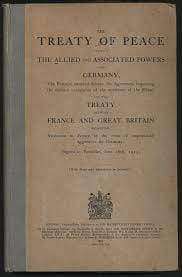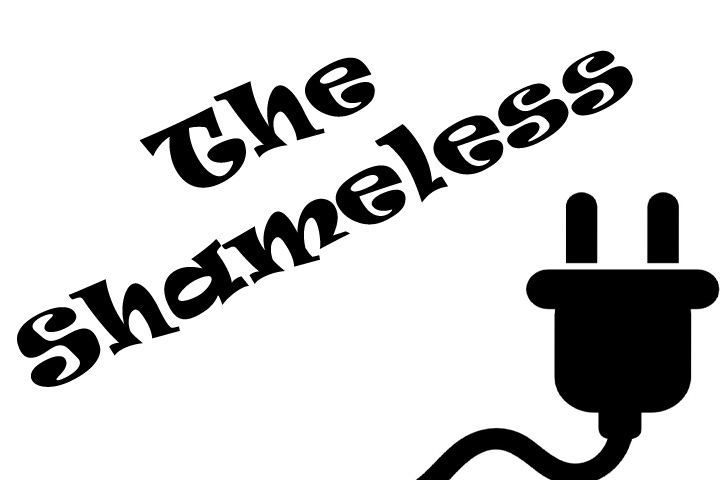The Paris Peace Conference and Treaty of Versailles
It was partially responsible for the rise of Hitler, the Nazi Party, and WWII
The Treaty of Versailles
Issue #154 American History October 18, 2022
No ads or annoying popups ever! So instead, please see the important information at the bottom of this post. Please keep those “Likes” and comments coming! Thanks!
As we watch the rapid ascendancy of fascism here in America, we have to remember that this has happened before. There have been several people in the United States in the 20th century who admired autocrats like Hitler, and now in the 21st century, many Americans, including Donald Trump and Elon Musk admire and support dictators like Xi and Putin.
When we teach and learn about the actual history of America (instead of trying to cover up the “bad parts”), we realize that fascism in America actually started right after World War II, in conjunction with the rise of fascism in Europe.
For more historical reference, I highly recommend the new podcast by Dr. Rachel Maddow called “Ultra.” Four episodes are published so far, and in the podcast she details how people have tried to overthrow the United States representative democracy and replace it with an authoritarian government for decades. You can listen to the podcast at this link. It is also available on your favorite podcast player.
The Paris Peace Conference and the Treaty of Versailles
The United States reluctantly entered World War I in 1917, three years after it started in 1914 with the assassination of Archduke Franz Ferdinand of Austria. In January 1918, U.S. President Woodrow Wilson presented a basis for peace called the Fourteen Points. In October 1918, Germany asked Wilson to arrange a general armistice and said that it accepted the Fourteen Points. However, the Allies demanded “…compensation by Germany for all damage done to the civilian population of the Allies and their property by the aggression of Germany by land, sea, and from the air.”
The “Big Four” Photo Credit: Getty Images
The Treaty of Versailles was drafted in the spring of 1919 during the Paris Peace Conference, which was held in the middle of the Spanish Flu pandemic of 1918-1919. Although there were approximately 32 countries involved, only the “Big Four,” the United Kingdom, France, Italy, and the United States made most of the decisions. Among many other elements, the Treaty of Versailles placed the “war guilt” on Germany and demanded the return of lands taken during the war as well as huge reparations to be paid by Germany to the Allied Powers.
Germany felt betrayed by the Allies, also known as the Allied Powers or the Entente Powers. This group included France, the United Kingdom, Russia, Italy, Japan, and the United States. Notice that by World War II, the United States was at war against Germany and also against Italy and Japan, while Russia remained an ally.
The League of Nations
The Covenant of the League of Nations was also included in the treaty and was intended to guarantee the independence and territories of the Allies and ensure that Germany would never again have the military power to attack other nations.
The League of Nations was established on April 28, 1919. The covenant included the establishment of a Permanent Court of International Justice and the International Labor Organization. There were also terms that would apply to any members of the League that resorted to war. This is part of the reason why World War I was called “The war to end all wars.”
Additionally, the Chinese were angered by the transfer of their lands to Japan, while Japan was still angered by the 19th-century racist theories of American and European countries (plus Australia and New Zealand) of the “Yellow Peril,” that declared that people of East and Southeast Asia were an existential threat to the Western World (read: white people and white power).
China and Japan tried to insert racial equality language into the treaty but were rebuffed by the United States, France, and the United Kingdom.
Ultimately, the League of Nations failed because the United States Senate decided in March 1920 not to approve American involvement, although President Wilson lobbied hard to win support.
The German Response and the Rise of Adolph Hitler
Although Germany signed the Treaty of Versailles on June 28, 1919, the country bitterly complained that the treaty was forced upon them, that it violated the Fourteen Points, and that reparations would wreck its economy.
Over the years, changes were made to the treaty, most of which favored Germany, until, by 1938, only the elements concerning territories remained.
Many historians agree that the harsh terms of the treaty and then the lax enforcement of those terms led to the upsurge of Germany’s militarism in the 1930s. When Hitler violated the treaty in 1936 by remilitarizing the country, the Allies did nothing to stop him, which in the future encouraged Germany’s aggression against other European nations.
Adolph Hitler, a failed artist and an Austrian by birth, exploited the German resentment of the provisions of the Treaty of Versailles and the eventual collapse of the German economy, partially brought on by the Great Depression. Hitler believed that Germany had not really lost the war, but was forced to surrender by the Weimar Republic, which was the government of Germany from 1918 through 1933.
Hitler blamed the Treaty of Versailles, the Weimar Republic, Jews, Gypsies, homosexuals, and anyone who was not, in his view, of pure Aryan blood for Germany’s problems. Hitler and the Nazi Party rose to power on his promise to reverse the plundering and devastation he believed was brought on by the Treaty of Versailles and promised to recover Germany’s lost territories and restore pride to Germany.
Lessons for Today
If any of this sounds familiar, you are right. Joe Biden decided not to run for president in 2016 because he was still in so much grief over the 2015 death of his son Beau. But in 2017, Joe decided to run after the Nazi-themed “Unite the Right” rally in Charlottesville, Virginia, when Donald Trump declared “…there are good people on both sides…” showing his support for American Nazis.
The MAGA and “America First” movements, as well as the rising open racism and antisemitism of the Republican Party, plus several other authoritarian incidents by Donald Trump are very dangerous for our country and the “American Experiment” of representative democracy.
The “America First” philosophy was first coined by the racist President Woodrow Wilson and continued by the Ku Klux Klan and Donald Trump. It emphasizes white Christian nationalism and non-interventionism, such as withdrawing from all international treaties such as NATO.
We cannot ignore the threat. As Dr. Maddow explains in the episodes of her new podcast, every twenty years or so, the threat of authoritarianism and fascism bubbles up in the United States.
Fascism has only been squashed in American history by liberals and progressives who work hard to keep our imperfect democracy and Constitution as the law of the land instead of fealty to one person who declares only he can fix things.
It is up to us to squash this threat once again.
Let us know what you think!
Help us to grow “We Are Speaking!”
Read and listen to “We Are Speaking” on the iOS app!
Please support us: subscribe for free or upgrade your current subscription to a paid level at only 35¢ per issue.
Please check out the products and services of the TeamOwens313 Global Creative Community Branding and Marketing Academy (GCC BMA) for independent writers and creative professionals. We offer online training, group and one-on-one coaching, and a 10-week mastermind cohort that begins the first Monday of every month.







